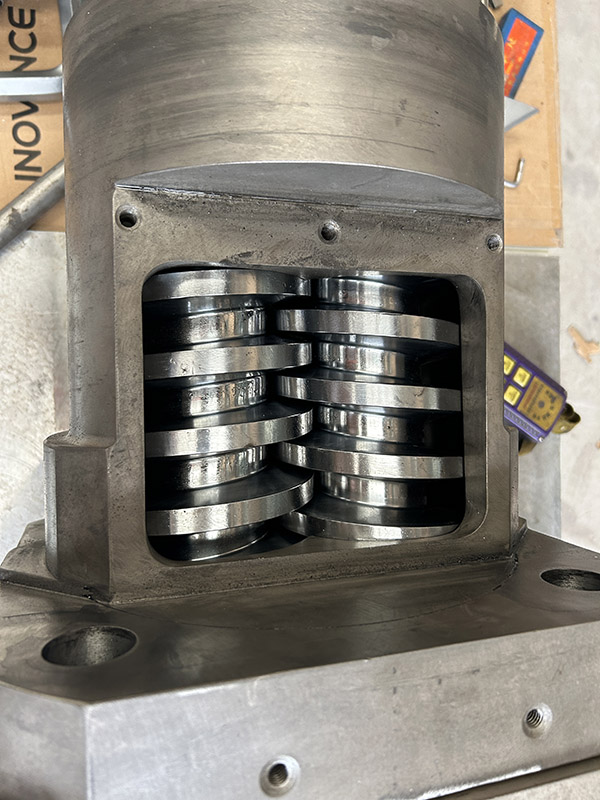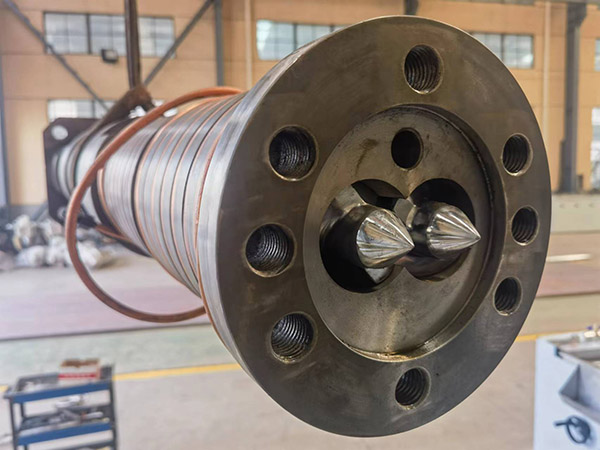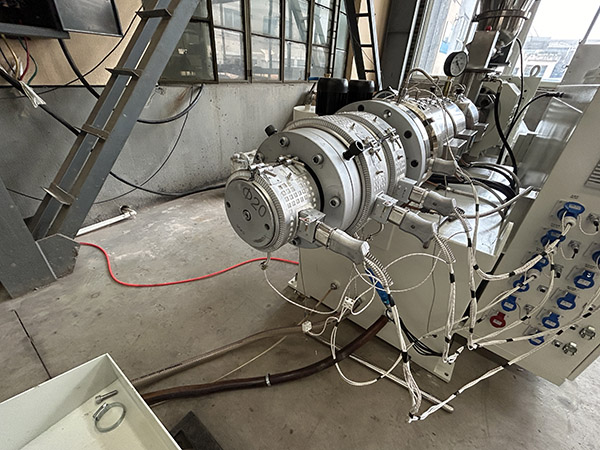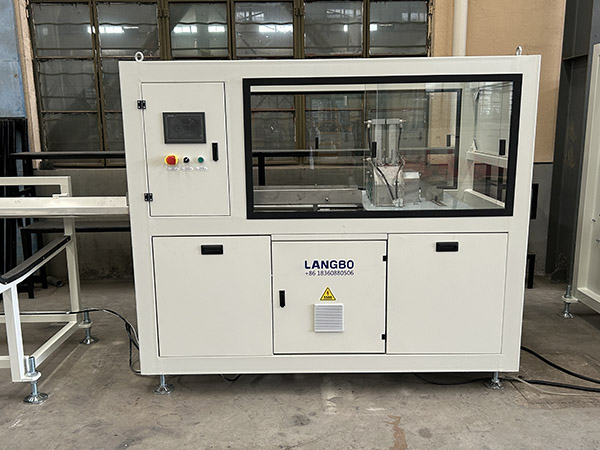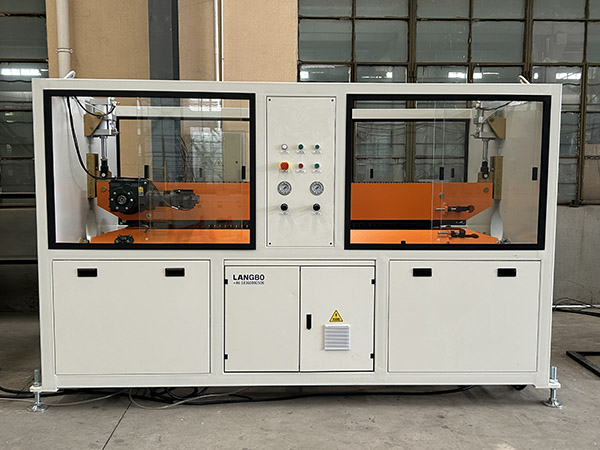Due to the characteristics of cpvc raw material, the screw, barrel, die mould, haul-off and cutter design differs from the upvc pipe extrusion line.
Today let’s focus on the screw and die mould design.
How to modify the screw design for cpvc pipe extrusion
Modifying the screw design for CPVC pipe extrusion involves adjustments to optimize melting, mixing, and conveying of the CPVC material. Here are some considerations for modifying the screw design:
1. **Screw Geometry**:
- Modify the flight depth and pitch: Adjusting the flight depth and pitch can optimize conveying and mixing of CPVC material within the screw channel.
2. **Compression Ratio**:
- Increase the compression ratio: CPVC’s higher melt viscosity may require higher compression ratios to generate sufficient pressure and shear for melting and mixing.
3. **Screw Material and Coating**:
- Utilize materials or coatings with enhanced wear resistance and corrosion resistance to withstand the abrasive and corrosive nature of CPVC processing.
- Consider coatings or treatments that reduce friction and improve release properties to enhance CPVC melt flow and minimize screw wear.
4. **Screw Cooling/Heating**:
- Implement heating/cooling zones along the screw barrel to control melt temperature and viscosity, especially in areas where CPVC may experience thermal degradation or overheating.
5. **Screw Cooling**:
- Ensure proper screw cooling to maintain temperature control and prevent overheating of the CPVC melt, especially in high-speed extrusion processes.
By considering these factors and making appropriate modifications to the screw design, manufacturers can optimize CPVC pipe extrusion processes to achieve consistent melt quality, homogeneity, and throughput.
How to modify the die design for cpvc pipe extrusion
Modifying the die design for CPVC pipe extrusion involves adjustments to accommodate CPVC’s higher melt viscosity and ensure uniform extrusion.
1. **Die Heating/Cooling**:
- Adjust heating/cooling zones: CPVC’s higher processing temperatures may require modifications to the die heating/cooling system to maintain proper temperature control and prevent overheating or cooling.
2. **Die Materials and Coatings**:
- Consider using materials/coatings with higher heat resistance: CPVC’s higher processing temperatures may necessitate die materials or coatings that can withstand elevated temperatures without degradation.
3. **Die Surface Finish**:
- Ensure a smooth and uniform die surface finish: A smooth die surface helps minimize friction and shear forces, reducing the risk of melt fracture and ensuring uniform extrusion.
4. **Flow Control Devices**:
- Incorporate flow control devices, such as inserts or restrictors, to optimize flow distribution and pressure uniformity across the die profile, particularly in complex die geometries.
5. **Die Design Simulation**:
- Utilize die design simulation software to analyze flow behavior, pressure distribution, and temperature profiles within the die. This allows for virtual testing of various die modifications to optimize performance before physical implementation.
By considering these factors and making appropriate modifications to the die design, manufacturers can optimize CPVC pipe extrusion processes to achieve consistent quality and dimensional accuracy.
In the extrusion process of cpvc pipe, which points should be careful
During the extrusion process of CPVC (Chlorinated Polyvinyl Chloride) pipes, several points require careful attention to ensure the production of high-quality pipes. Here are some key points:
1. **Material Handling and Mixing**:
- Ensure proper handling and mixing of CPVC resin and additives to achieve uniform dispersion and consistency in the material. Proper mixing is crucial for maintaining the desired properties of the CPVC compound.
2. **Temperature Control**:
- Monitor and control the extrusion temperature carefully, as CPVC material has specific temperature requirements for processing. Maintain the temperature within the recommended range to prevent degradation of the material and ensure proper melt flow.
3. **Screw Design and Configuration**:
- Use extruder screws designed specifically for processing CPVC material. The screw design should provide adequate mixing and homogenization of the melt while minimizing shear heating to avoid material degradation.
4. **Die Design and Calibration**:
- Ensure the die design is suitable for CPVC pipe extrusion, with proper dimensions and geometry to produce pipes with consistent wall thickness and diameter. Calibrate the die properly to achieve uniform pipe dimensions.
5. **Cooling and Quenching**:
- Implement effective cooling and quenching systems to rapidly cool the extruded CPVC pipe and set its dimensions. Proper cooling is essential for preventing warping or distortion of the pipe and ensuring dimensional stability.
6. **Pulling and Sizing**:
- Control the pulling speed and sizing of the CPVC pipe to achieve the desired dimensions and surface finish. Proper pulling and sizing ensure uniformity in pipe diameter and wall thickness throughout the length of the pipe.
7. **Monitoring and Quality Control**:
- Implement a comprehensive monitoring and quality control system to detect any defects or inconsistencies in the extruded CPVC pipes. Conduct regular inspections and tests to ensure compliance with specifications and standards.
By carefully managing these points during the extrusion process, manufacturers can produce high-quality CPVC pipes that meet the required specifications and performance standards.
Post time: Apr-02-2024

